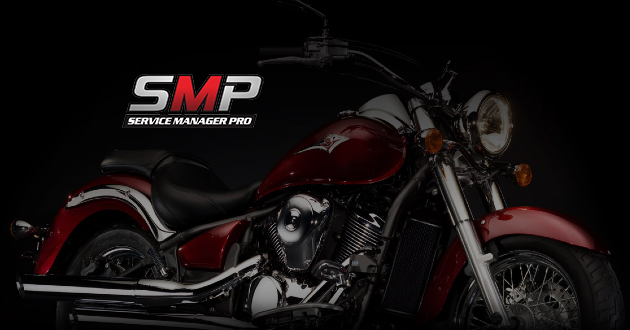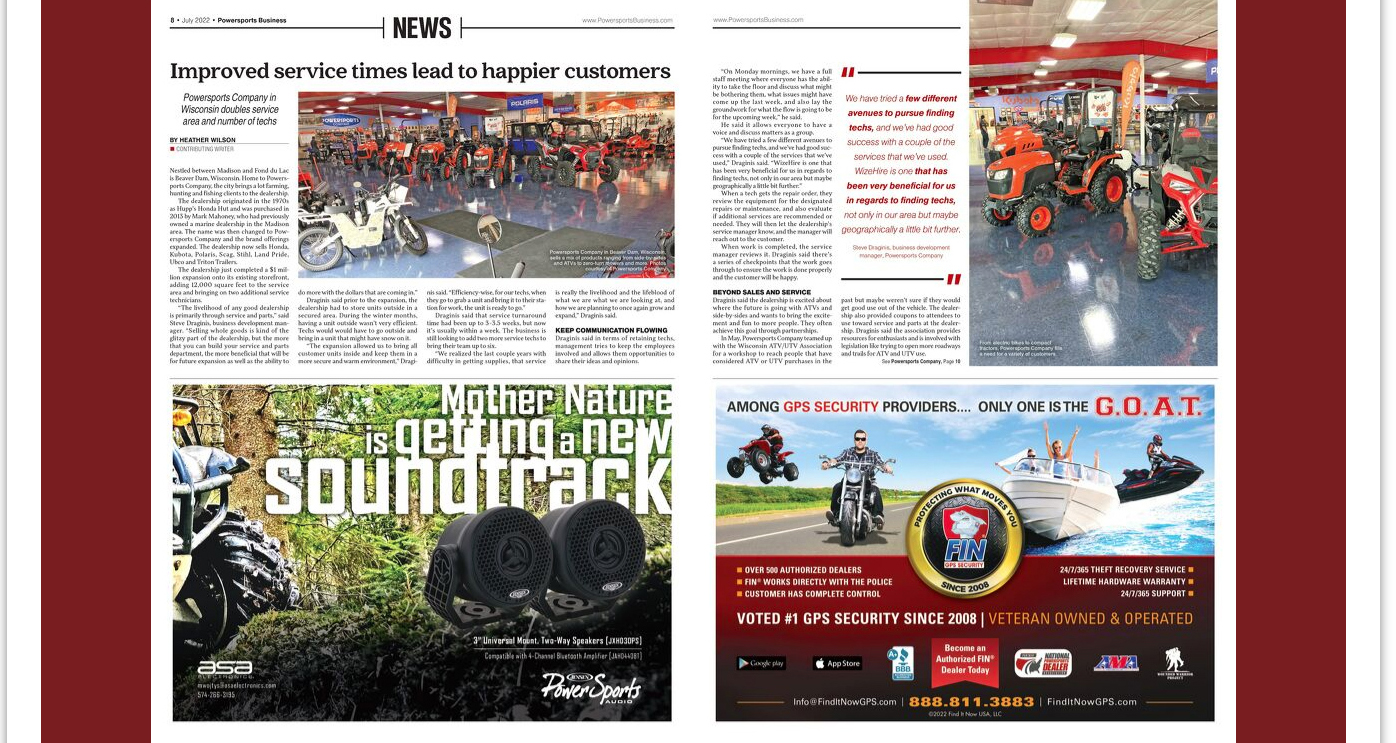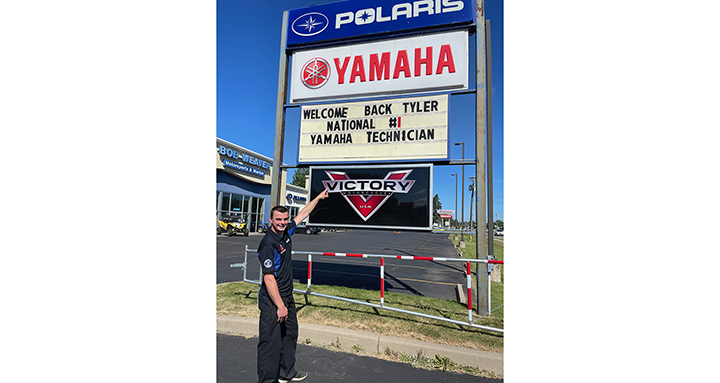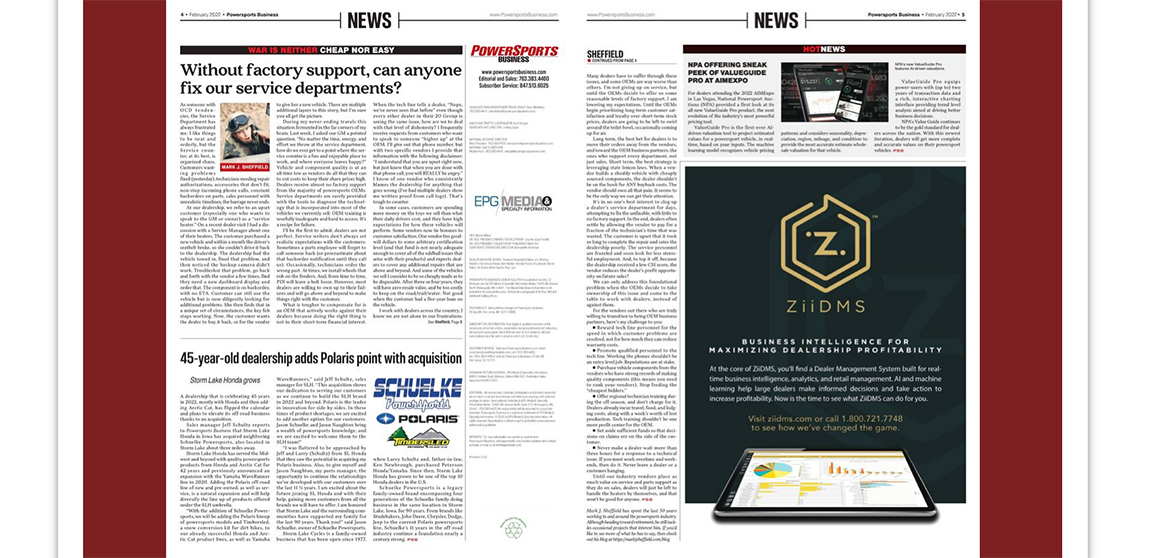Without factory support, can anyone fix our service departments?
Powersports Business contributor Mark J. Sheffield, a former dealer principal who now steers dealership owners in the right direction as a 20 Group facilitator for Spader Business Management, provides dealers with a timely piece on service departments.
As someone with OCD tendencies, the Service Department has always frustrated me. I like things to be neat and orderly, but the Service counter, at its best, is organized chaos. Customers wanting problems fixed (yesterday), technicians needing repair authorizations, accessories that don’t fit, non-stop incoming phone calls, constant backorders on parts, sales personnel with unrealistic timelines, the barrage never ends.
At our dealership, we refer to an upset customer (especially one who wants to speak to the GM or owner) as a “service heater.” On a recent dealer visit I had a discussion with a Service Manager about one of their heaters. The customer purchased a new vehicle and within a month the driver’s seatbelt broke, so she couldn’t drive it back to the dealership. The dealership had the vehicle towed in, fixed that problem, and then noticed the backup camera didn’t work. Troubleshot that problem, go back and forth with the vendor a few times, find they need a new dashboard display and order that. The component is on backorder, with no ETA. Customer can still use the vehicle but is now diligently looking for additional problems. She then finds that in a unique set of circumstances, the key fob stops working. Now, the customer wants the dealer to buy it back, or for the vendor to give her a new vehicle. There are multiple additional layers to this story, but I’m sure you all get the picture.
During my never-ending travels this situation fermented in the far corners of my brain. Last week, I asked our GM a pointed question. “No matter the time, energy, and effort we throw at the service department, how do we ever get to a point where the service counter is a fun and enjoyable place to work, and where everyone leaves happy?” Vehicle and component quality is at an all-time low as vendors do all that they can to cut costs to keep their share prices high. Dealers receive almost no factory support from the majority of powersports OEMs. Service departments are rarely provided with the tools to diagnose the technology that is incorporated into most of the vehicles we currently sell. OEM training is woefully inadequate and hard to access. It’s a recipe for failure.
I’ll be the first to admit, dealers are not perfect. Service writers don’t always set realistic expectations with the customers. Sometimes a parts employee will forget to call someone back (or procrastinate about that backorder notification until they call us). Occasionally, technicians order the wrong part. At times, we install wheels that rub on the fenders. And, from time to time, PDI will leave a bolt loose. However, most dealers are willing to own up to their failures and will go above and beyond to make things right with the customer.
What is tougher to compensate for is an OEM that actively works against their dealers because doing the right thing is not in their short-term financial interest. When the tech line tells a dealer, “Nope, we’ve never seen that before” even though every other dealer in their 20 Group is seeing the same issue, how are we to deal with that level of dishonesty? I frequently receive requests from customers who want to speak to someone “higher up” at the OEM. I’ll give out that phone number, but with two specific vendors I provide that information with the following disclaimer: “I understand that you are upset right now, but just know that when you are done with that phone call, you will REALLY be angry.” I know of one vendor who consistently blames the dealership for anything that goes wrong (I’ve had multiple dealers show me written proof from call logs). That’s tough to counter.
In some cases, customers are spending more money on the toys we sell than what their daily drivers cost, and they have high expectations for how these vehicles will perform. Some vendors now tie bonuses to customer satisfaction. One vendor ties goodwill dollar to some arbitrary certification level (and that fund is not nearly adequate enough to cover all of the oddball issues that arise with their products) and expects dealers to cover any additional repairs that are above and beyond. And some of the vehicles we sell I consider to be so cheaply made as to be disposable. After three or four years, they will have zero resale value, and be too costly to keep on the road/trail/water. Not good when the customer had a five-year loan on the vehicle.
I work with dealers across the country, I know we are not alone in our frustrations. Many dealers have to suffer through these issues, and some OEMs are way worse than others. I’m not giving up on service, but until the OEMs decide to offer us some reasonable levels of factory support, I am lowering my expectations. Until the OEMs begin prioritizing long-term customer satisfaction and loyalty over short-term stock prices, dealers are going to be left to swirl around the toilet bowl, occasionally coming up for air.
Long term, the best bet for dealers is to move their orders away from the vendors, and toward the OEM business partners, the ones who support every department, not just sales. Short term, the best strategy is leveraging state lemon laws. When a vendor builds a shoddy vehicle with cheaply sourced components, the dealer shouldn’t be on the hook for ANY buyback costs. The vendor should own all that pain. It seems to be the only way we can get their attention.
It’s in no one’s best interest to clog up a dealer’s service department for days, attempting to fix the unfixable, with little to no factory support. In the end, dealers often settle by allowing the vendor to pay for a fraction of the technician’s time that was wasted. The customer is upset that it took so long to complete the repair and rates the dealership poorly. The service personnel are frazzled and soon look for less stressful employment. And, to top it off, because the dealership received a low CSI score, the vendor reduces the dealer’s profit opportunity on future sales?
We can only address this foundational problem when the OEMs decide to take ownership of this issue and come to the table to work with dealers, instead of against them.
For the vendors out there, who are truly willing to transition being OEM business partners, here’s my challenge to you:
- Reward tech line personnel for the speed in which customer problems are resolved, not for how much they can reduce warranty costs.
- Promote qualified personnel to the tech line. Working the phones shouldn’t be an entry level job. Reputations are at stake.
- Purchase vehicle components from the vendors who have strong records of making quality components (this means you need to rank your vendors). Stop feeding the “cheapest bidders.”
- Offer regional technician training during the off season, and don’t charge for it. Dealers already incur travel, food, and lodging costs, along with a week’s worth of lost production. Tech training shouldn’t be one more profit center for the OEM.
- Set aside sufficient funds so that decisions on claims err on the side of the customer.
- Never make a dealer wait more than three hours for a response to a technical issue. If you must work overtime and weekends, then do it. Never leave a dealer or a customer hanging.
Until our industry vendors place as much value on service and parts support as they do on sales, dealers will just be left to handle the heaters by themselves, and that won’t be good for anyone.
Mark J. Sheffield has spent the last 30 years working in and around the powersports industry. Although heading toward retirement, he still tackles occasional projects that interest him. If you’d like to see more of what he has to say, then check out his blog at https://markjsheffield.com/blog







